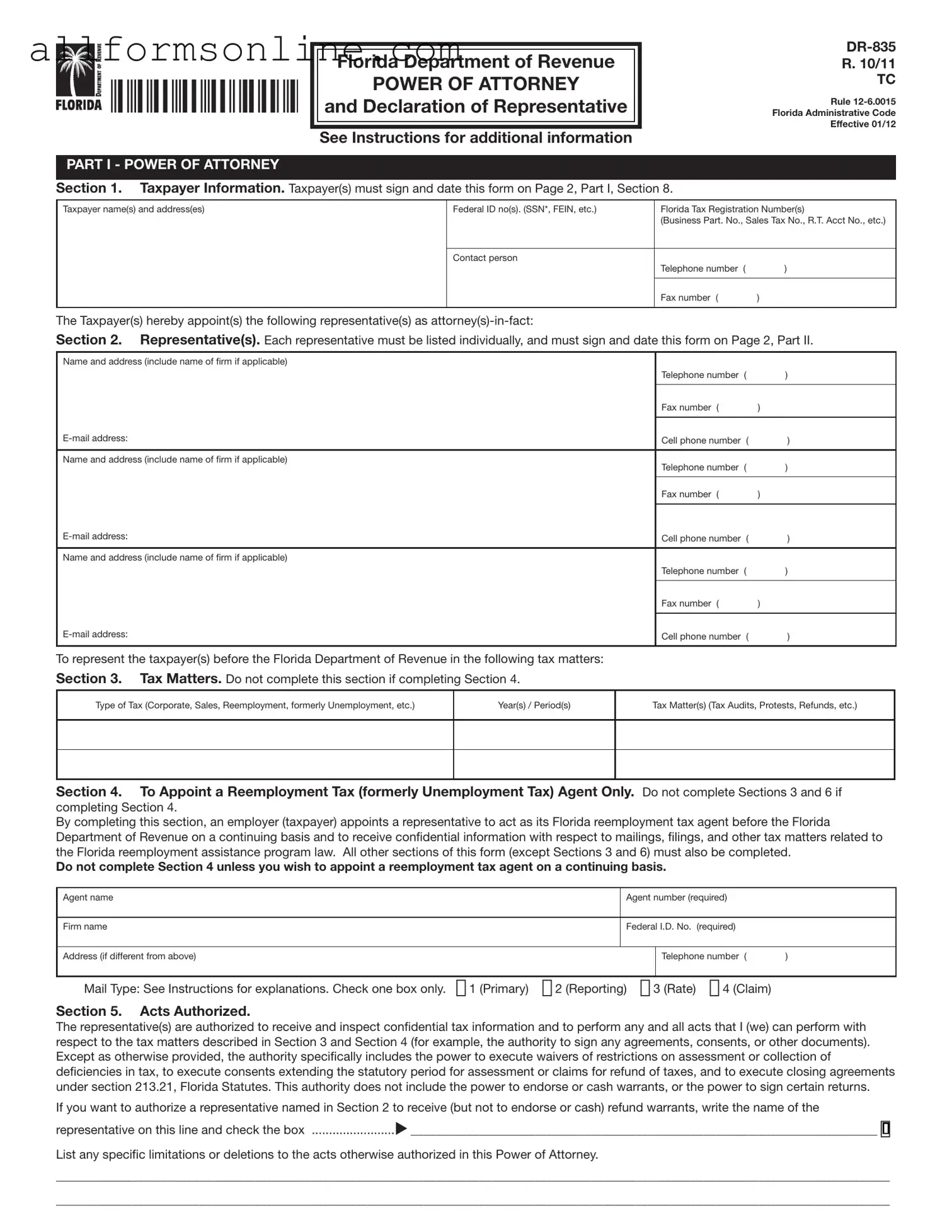What is the Tax POA DR 835 form?
The Tax POA DR 835 form is a Power of Attorney document specifically used for tax matters in certain jurisdictions. It allows individuals to designate someone else, typically a tax professional or attorney, to represent them before tax authorities. This form grants the designated representative the authority to handle tax-related issues, including filing returns, responding to inquiries, and managing disputes. It simplifies communication between taxpayers and tax agencies, ensuring that important matters are addressed promptly and effectively.
Who should consider using the Tax POA DR 835 form?
Anyone who needs assistance with their taxes may benefit from using the Tax POA DR 835 form. This includes individuals who may not feel comfortable navigating tax laws on their own, those who are facing complex tax situations, or anyone who simply wants to delegate their tax responsibilities to a trusted professional. Business owners, in particular, often find it useful to appoint a tax advisor to manage their corporate tax matters efficiently.
How do I complete the Tax POA DR 835 form?
Completing the Tax POA DR 835 form involves a few straightforward steps. First, gather the necessary information about yourself and the person you wish to appoint as your representative. This includes names, addresses, and identification numbers. Next, fill out the form accurately, ensuring that all required fields are completed. Finally, sign and date the form to validate it. It’s important to keep a copy for your records and provide the completed form to your representative so they can act on your behalf.
Is there a fee associated with submitting the Tax POA DR 835 form?
How long does it take for the Tax POA DR 835 form to be processed?
